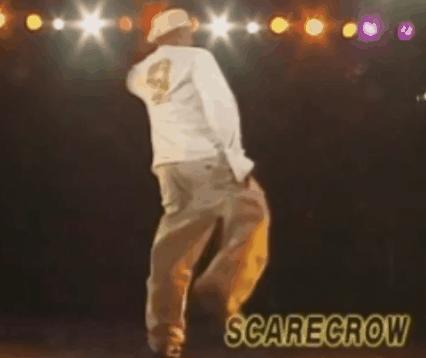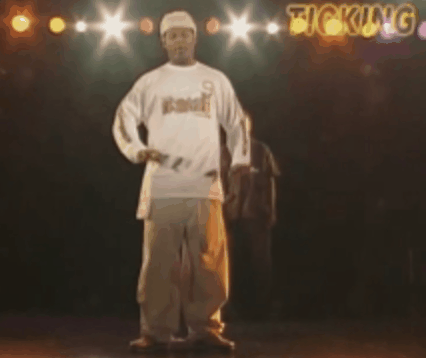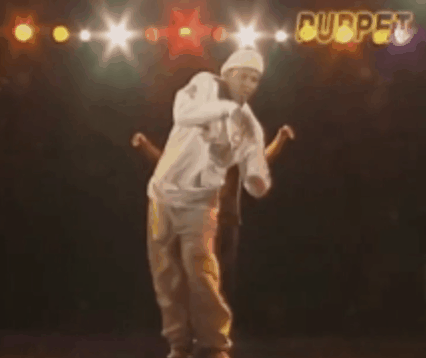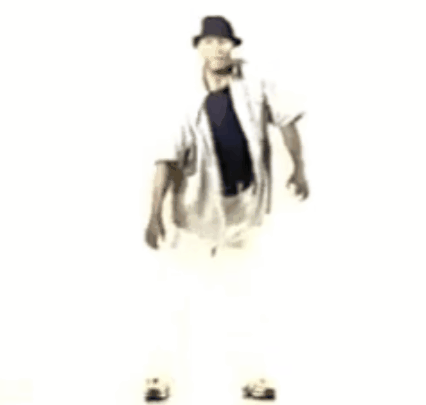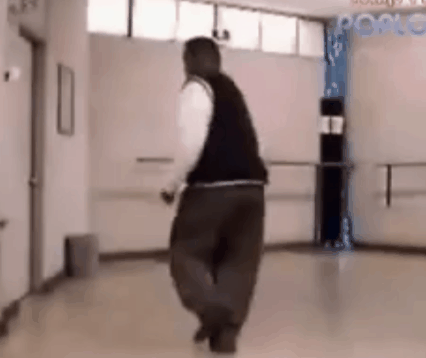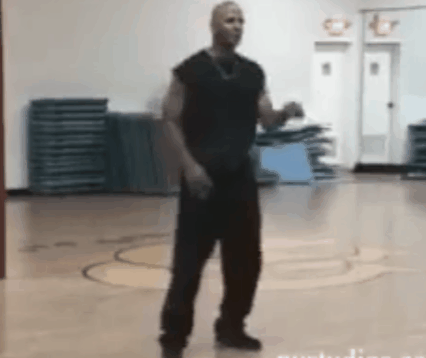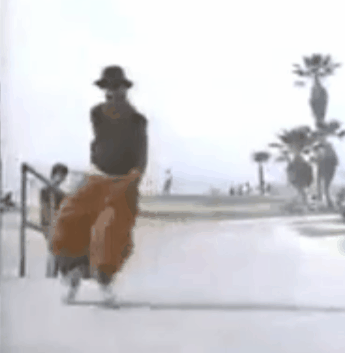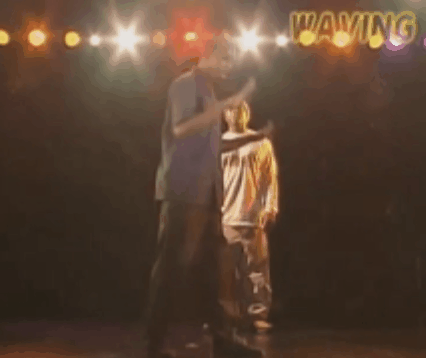A Comprehensive Guide to Popping
From the legendary Electric Boogaloos to the innovative poppers of today, understanding the diverse styles within popping is crucial for appreciating its rich history, dynamic evolution and migration in funk styles. In this comprehensive guide, we'll delve into the diverse world of popping styles and techniques, providing valuable insights for both beginners and seasoned dancers alike.
History of popping
The history of popping traces back to the 1970s in the African-American communities of California, particularly in cities like Fresno and Oakland. It emerged as a street dance style within the funk and soul music scene, characterized by its rhythmic movements and sharp, popping motions.
Popping is closely associated with the funk music genre and was influenced by various dance styles, including robot dancing, mime, and the movements of characters in cartoons and television shows.
Boogaloo Sam (Sam Solomon) and his dance crew, The Electric Boogaloos, are credited with popularizing popping and related funk styles. They developed and refined popping techniques such as hitting, waving, and ticking, which became foundational elements of the style.
Popping gained further exposure through performances in venues such as nightclubs, talent shows, and street corners, as well as through media appearances in movies and television shows.
Over time, popping evolved and diversified, with different regional styles and variations emerging. These variations include styles like Boogaloo, Tutting, Animation, and Strobing, each with its own unique movements and characteristics.
Today, popping remains a vibrant and influential dance style practiced by dancers worldwide. Its history is deeply rooted in the cultural and musical heritage of African-American communities on the West Coast of the United States, and its impact continues to be felt in various forms of entertainment and popular culture.
Is Popping Hip-Hop?
There's a common misconception that popping is a form of hip-hop, largely influenced by movies like Breakin' and Breakin 2: Electric Boogaloo. In these films, various dance styles, including breaking and funk styles like popping, locking, and electric boogaloo, were all grouped under the umbrella term "breakdance," leading to confusion in terminology. As a result, the media often associated funk styles with hip-hop music and mistakenly assumed that popping and Electric Boogaloo was synonymous with breaking. However, the distinction lies in their origins: breaking originated in the Bronx, New York, while popping and boogaloo emerged from Fresno, CA where funk styles migrated and trended. It is important to remember that funk styles are a black diasporic dance.
Electric Boogaloos
Popping dance, with its origins deeply rooted in the streets and clubs of 1970s California, has evolved into a multifaceted art form celebrated worldwide. As we delve into the world of popping, it's essential to pay homage to the pioneers who paved the way for this vibrant dance style such as Boogaloo Sam, Poppin Pete, Skeeter Rabbit, Suga Pop, Mr. Wiggles, Cedric Williams (AKA Creep’n Sid), Gary Allen (AKA Scarecrow Scally), Marvin “Puppet” Boozer and Dane “Robot” Parker.
Styles of Popping and other illusionary dance styles
While there are many styles of popping, here are just a few movements and styles to get you started:
Electric Boogaloo Style
Drawing inspiration from animated movies and cartoons, this style aims to mimic the fluidity and flexibility of a boneless body and a sense of swing. Developed by Boogaloo Sam in 1975, it's characterized by circular rolls of body parts like hips, knees, and head, as well as isolation and sectioning techniques such as separating the rib cage from the hip. The incorporation of angles, steps, and transitions adds to its dynamic flair. Originally, this style didn't involve popping, but when fused with popping, it gave rise to the iconic Electric Boogaloo, the signature style of The Electric Boogaloos dance crew. This is also where Dassy has prominently gained her popping influences from.
Part 1: Interview with Boogaloo Sam
Part 2: Interview with Boogaloo Sam
popping
Known for its sharp and percussive movements, pop is the foundational technique of popping dance. Dancers create the illusion of muscles contracting and releasing in synchronization with the beat of the music, giving rise to the iconic "pop" effect.
Scarecrow
The Scarecrow, a signature move with the Electric Boogaloos, involves waving the arms in a fluid motion reminiscent of a scarecrow movement in the wind. Boogaloo Sam’s inspiration was from the Wizard of Oz.
Ticking
Ticking involves rapid movements that mimic double timing.
Puppet
Inspired by imitating a puppet or marionettes attached to strings and being manipulated.
Toyman
Inspired by action figures like G.I. Joe and Major Matt Mason, this style was pioneered by Toyman Skeet, a former member of the Electric Boogaloos. It involves transitioning between straight arms and right angles, mimicking the limited joint movement typically seen in action figures.
Old Man
Inspired by an old man with a walking difficulty.
Neck O Flex
“Neck-o-flex" is a dance move where the dancer focuses on isolating and moving their neck in a flexible manner.
Twist O Flex
“Twist-o-flex" is a dance move where the dancer twists and flexes their body in a fluid or dynamic manner. This movement involve twisting the torso, limbs, or other body parts in a coordinated and rhythmic fashion.
Master Flex
Fresno
Fresno is a fundamental movement created by Boogaloo Sam. It involves starting with a side-to-side motion before progressing into short routines incorporating various other movements.
Gliding
Gliding involves moving across the dance floor with smooth, fluid movements that give the illusion of floating. This includes the Backslide which was made famous by Michael Jackson who called this the moonwalk.
Waving
Waving popping focuses on creating seamless waves of motion throughout the body. Dancers transition smoothly between different parts of their body, such as the arms, chest, and shoulders, to create the illusion of waves flowing through them.
Strutting
Strutting is a dance style originating out of the City of Bay Area, CA in the 1970s. Strutting incorporates elements of hitting angles to create confident movements. Known for its stylish flair, strutting is a favorite among dancers looking to express themselves with finesse.
Robot Style
Originating from the streets of California in the 1970s, robot style popping emphasizes rigid, mechanical movements that mimic robotic motions. Perfecting this style requires mastering isolations and angular shapes, creating the illusion of being a mechanical being. Many also like to think of a mannequin when executing this technique.
Animation
Animation popping involves creating the illusion of inanimate objects or film characters coming to life through precise movements and control that illustrate stop motions or frame by frame moments. Dancers mimic the movements of robots, toys, or machines, using techniques like ticking, strobing, and waving to bring their animations to life. Animation was inspired by the Dynamation films by Ray Harryhausen such as The Seventh Voyage of Sinbad (1958).
Tutting
Tutting is a geometric style of popping inspired by the poses found by ancient Egyptian hieroglyphics. Dancers create visually striking shapes and patterns with their arms and hands, emphasizing angular movements and intricate formations and 90-degree angles.
Dime Stop
The dime stop is a signature move in popping that involves freezing in a precise position, as if hitting an invisible "stop" button as if attempting to stop on a dime. Dancers execute this move with impeccable timing and control, adding dramatic effect to their performances.
Snaking/King Cobra
Snaking popping involves fluid, serpentine movements that mimic the undulating motion of a snake.
Isolation
Isolation focuses on moving specific body parts while keeping the rest of the body still.
Recognizing Signature Moves and Characteristics
Understanding the key characteristics and signature moves of each popping style is essential for mastering the nuances of the dance form. By recognizing these traits, dancers can develop their skills and express themselves authentically through popping.
Choosing Your Style and Finding Your Voice
Exploring different popping styles allows dancers to find their personal preference and develop their unique popping style. By experimenting with combinations of styles and embracing individuality, dancers can unlock their creative potential and express themselves fully through popping.
Other Significant Crews
Playboyz
https://www.instagram.com/playboyzinc/
Demons of the Mind/ Media Sirkus
https://www.youtube.com/watch?v=dl47ZzwYy54
The Black Resurgents
https://www.blackresurgents.com/
https://www.youtube.com/watch?v=fRokapZtCe
Ready to Dance?
To further explore the world of popping dance, we recommend checking out online tutorials, attending workshops and classes, and joining popping communities and forums.
Start with Everyday Popping which has all your essentials to get started.
Not sure if you want to join Everyday Popping yet? Want to try it first?
We’ve got you!
Click the button below to get FREE access to an online course!


